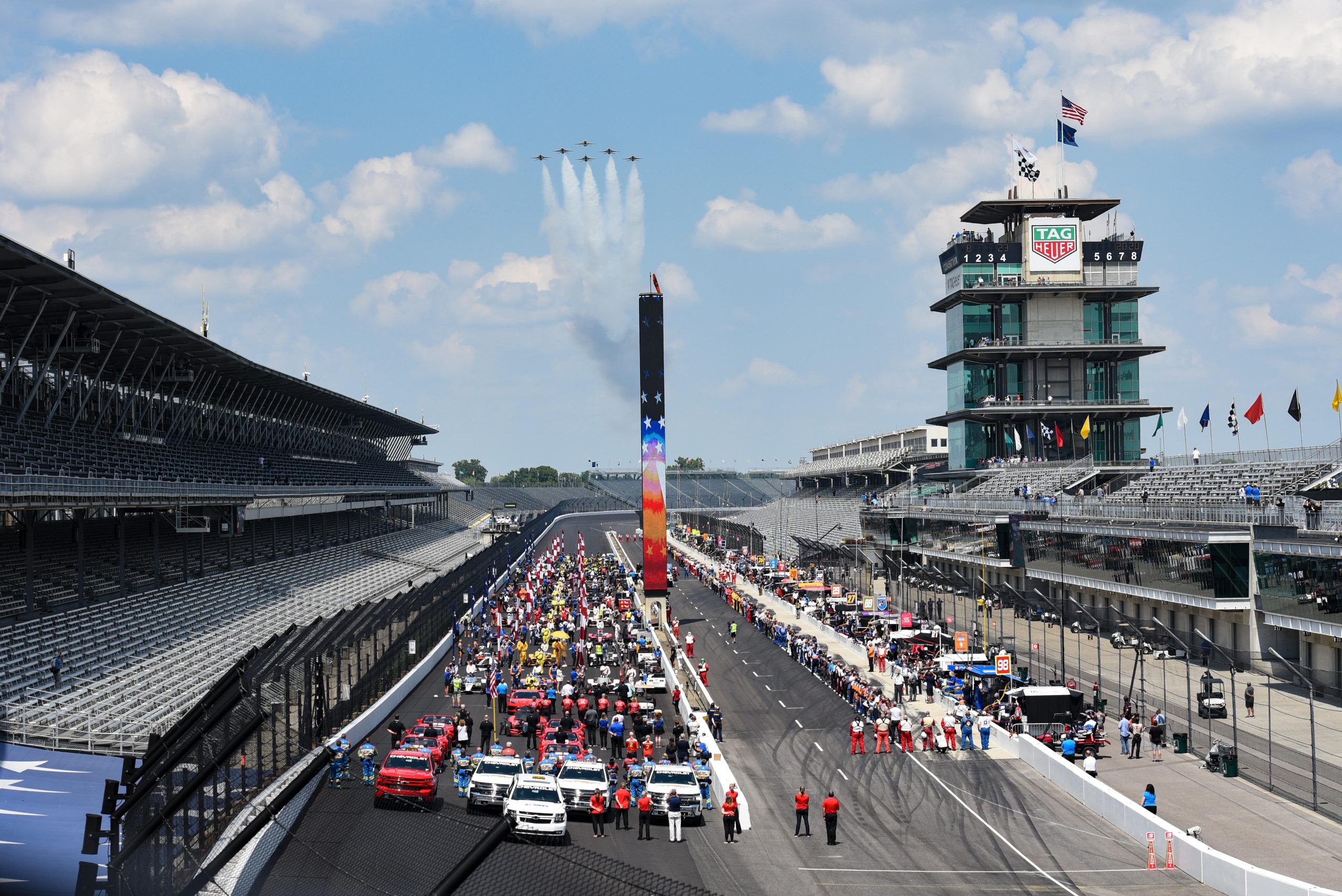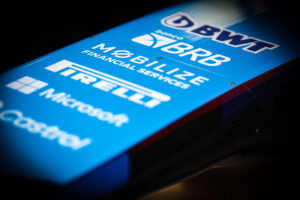In the early 1900s, motorsport as a concept evolved from two very different places on either side of the Atlantic Ocean.
Humble Beginnings
In its earliest sense, city-to-city auto races have been going on in America since the late 1800s. On Thanksgiving Day in 1885, a group of enthusiasts raced from Evanston, Illinois to Chicago, a distance of around 15 miles. But that is a far step from the racing we know and love today. The culture we celebrate in North America got its start in two places, the first Indianapolis 500 in 1911, and the post-prohibition era NASCAR in the 1930s and 40s.
The Indianapolis Motor Speedway was built in 1909 to host a handful of different disciples of racing at the time, including motorcycle racing. It was repaved from gravel to its now iconic brick surface in 1910 and held the first Indy 500 in 1911. The race has been held almost every year since on its traditional Memorial Day weekend date at the end of May. The Indy 500 was the birth of American open-wheel racing and was the closest thing to European Formula racing which was also gaining in popularity at the time.
Stock Car Revolution
Whereas the Indy 500 was the advent of speed in America, NASCAR and early stock car racing were the birthplaces of the racing culture as we know it today. During the prohibition era of the 1920s, moonshine runners would work on extracting as much speed as they could out of standard road cars to outrun the police. When prohibition ended, those with suped-up cars started racing each other in loosely organized events on both roads and ovals.
In the late 1940s, Bill France Sr. formed the National Association for Stock Car Auto Racing, or NASCAR, to help regulate and bring together these splinter racing series all around the country. This brought together the best drivers from all over the country, but mostly the southern states, together for the first official officially sanctioned NASCAR races in the late 1940s.
The early days of NASCAR are what helped define American motorsport culture. Most of the drivers were working-class and low-income family men, but all had an insatiable need for speed and a fiercely competitive nature. Early NASCAR was characterized by a diverse group of cars and builds. All the cars looked like they had just driven off the road and onto the track, and in some cases they did.
NASCAR has strayed far from its roots when it comes to the look of the cars. All the cars look more or less the same when it comes to body type. A large departure from the mismatched grids that took the track all the way until the early 90s. Compared to its open-wheel counterpart, NASCAR’s still look much more like regular street cars, but they still look a far cry from what you see on the way to work.
The Modern Stock Car
NASCAR is a manufacturer’s game, but it didn’t start that way. In the early days of the Automobile Manufacturers Association, banned factories and manufacturers from directly profiting off NASCAR as they saw it as a glorification of street racing. The manufacturer still found ways to support the teams however because of how good it was for sales. The term “Win on Sunday, Sell on Monday” was coined to help justify their involvement in the sport. The innovation that teams and manufacturers found on track would influence how the road cars were produced, giving the American public faster, more durable, and safer cars in the process.
NASCAR’s grassroots, working-class origins are what defines the culture of motorsport in America at its core. Stories like Dale Earnhardt going from living in a trailer to becoming one of the most famous drivers in the world are what make it so special. IndyCar is much of the same. Mario Andretti is an Italian immigrant that came to America with nothing but a love of racing and the drive to win, and he became the face of that sport and built an empire off of his name. Motorsport is synonymous with the ideals of the American dream and stories like that of the Earnhardts and Andrettis speak to that so beautifully.
Across the Pond
European racing was born on the pursuit of money from manufacturers in the early days of cars themselves. Whether it was the factory Ferraris headed by Enzo Ferrari in the early years of Formula 1 or the birth of the 24-hour endurance race in Le Mans France as a way to put factory cars against one another, manufacturers have always had a vested interest in racing. While that is true for the modern North American scene as well, it is not its origin. Its origin lies in the hands of the drivers, not the manufacturers.
While its origins differ from racing in America, European racing still has a rich and vibrant history, and it gave us some of the best engineering and driving minds the world has ever seen. But its history lies more in the factories, and the drivers were a lot more removed from the actual building of the car more often than not. The greats of NASCAR and IndyCar were right there in the pits turning wrenches and setting their car up before they got in and that resonates with American audiences.
Ford vs. Ferrari
America is a country built on ideals of rugged individualism, so when fans see their favorite driver, covered in the grease of their own car, hop in the cockpit and fight tooth and nail to win a race, that means something. While it’s not the case in modern top-level NASCAR or IndyCar, the spirit of that era of motorsport still resonates in local late models and midget racing, where largely self-funded, passionate people do whatever it takes for the love of the sport. More often than not the stars of the top series get their start in those local track races so their knowledge of the machinery they drive is a lot higher than most European drivers who have an engineering team for most of their career outside of karting.
The two schools of racing came head to head in 1966 with the highly publicized battle between Ford and the dominant Ferrari at the 24 hours of Le Mans. Ford sent over a factory-sponsored team to try and dethrone Ferrari who had won five straight as a team and one as an engine supplier. With 1959 winner Carroll Shelby, Ford supplied engines and resources for the team, who ended up winning handily and locking out the podium in the top class. While this victory does not denote either country as superior, it shows that the American way of racing can fight with the big dogs and win.
Inherently American Culture
Racing in the modern day, no matter where you are, is a corporate business through and through. But no matter how much money is put into it, the pursuit of speed and competition still courses through the veins of each and every driver, mechanic, and team boss just the same as it did when racing was in its infancy. Even though series like NASCAR and IndyCar are in a completely different universe compared to where they started, the grassroots natures of the sport are still very prevalent, and that is what makes the American racing culture so special today.
The American racing roots are part of the reason Formula One and other European series have so much trouble making footholds in the states. American audiences cannot relate to the European way of doing things as much as they can to a domestic product.
Even though NASCAR and IndyCar are more akin to their European counterparts as ever, the prevalence of Earnhardt merch at races and the fascination with Indy 500 tradition shows that American audiences are still very much tuned into the way things were. That is not to say change is impossible, but no matter where either series goes in the future, the past will always be on the mind.
Motor racing is as exciting as it has ever been on both sides of the Atlantic. IndyCar produces arguably the most competitive racing in the world week in and week out, NASCAR is seeing a steady uptick in attendance after a significant dip in the 2010s and Formula One is seeing previously unheard-of popularity in the US. The future for racing is bright all around the world, but here in the States, the past and where we came from will always be brighter.






